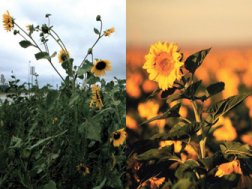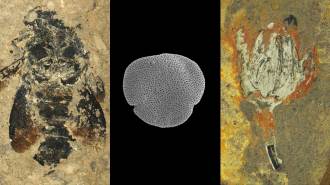From Madison, Wis., at a meeting of the Botanical Society of America

Comparison between crop and wild sunflower genes suggests that the plant followed an easy route to domestication.
Archaeologists estimate that people transformed wild sunflowers into a user-friendly form some 4,000 years ago, explains John M. Burke, now at Vanderbilt University in Nashville. The shift conferred traits such as self-fertilization and bigger seeds.
To examine the underlying genetics, Burke and Loren Rieseberg of Indiana University in Bloomington crossed a plant of a commercial variety with a wild sunflower and then let the offspring self-fertilize. After a second round of sunflower self-fertilization, the pair used genetic markers to locate stretches of DNA that control 18 traits that differ between wild and crop sunflowers.
In corn, for example, just five regions explain most of the difference between modern crops and wild teosinte. In sunflowers, though, Burke found about 20 genetic regions tied to domesticated traits.
Burke also found that many versions of genes valuable to sunflower farmers pop up in the wild. Overall, he says, the evidence suggests that people domesticated sunflowers by repeatedly selecting wild plants instead of finding a few with breakthrough mutations.
The issue of sunflower origins heated up last year when researchers found what looks like an ancient domesticated sunflower seed in Mexico. That challenged the view that domesticated sunflowers started in the eastern or central United States. Could sunflowers have been domesticated more than once? “Our study doesn’t bear directly on that, but the genetics suggest it’s possible,” Burke says.






